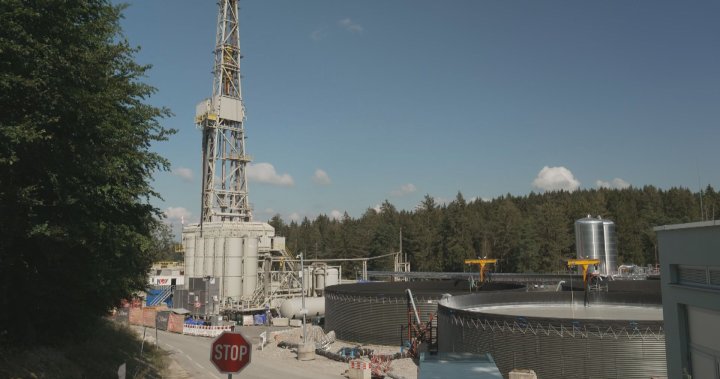‘Inspiring’: Video captures humpback whales bubble-net feeding

It’s a sight few are lucky to see.
Robert Gorcak, who works for the First Nations Health Authority, was in Kelmtu on Wednesday morning, visiting the Kitasoo Xai’xais First Nation, on the edge of the Great Bear Rainforest, when he saw a huge flock of seagulls hovering over the water.
“Suddenly I saw a blowhole blow up some mist,” he said.
That’s when he grabbed his microdrone and threw it up in the air.
A pod of humpback whales was bubble-net feeding. Gorcak said he followed them up the channel a little but then lost sight of them.
“So I went back to the tried and true First Nations method, which is follow the birds,” he said.
“And sure enough, they started gathering around and got the camera on site just as the first bubbles were coming up and managed to catch one of the most remarkable things you could probably see in the ocean, which is humpbacks doing their circle net, their bubble net.
(It) drives all the fish up and we got to catch them coming out of the water and take a big gulp like an all-you-can-eat buffet at Red Lobster.”

According to the Natural Marine Sanctuary Foundation, “whales dive deep below schools of fish and use bubbles blown from their blowholes to stun and trap fish closer to the surface. One whale generally leads the effort followed by the rest of the group. The leader will usually be responsible for blowing the bubbles and the other members will surround the fish, following them to the surface by swimming in spiral patterns to keep the fish trapped.”

Get daily National news
Get the day’s top news, political, economic, and current affairs headlines, delivered to your inbox once a day.
Humpback whales work in teams of at least two to bubble-net feed.
“This is definitely the first time I’ve ever seen this kind of behaviour,” Gorcak said.
“Never in my world, in life, did I ever imagine I’d be able to catch bubble feeding that you usually see on, you know, things like (the) Discovery Channel. So it was pretty cool.”
The drone Gorcak uses is only 32 grams and he made sure to stay far away from the humpbacks so as not to disturb their feeding.
He said every nature lover should visit that area of the province that is teeming with wildlife.
“We are in the Great Bear Rainforest here, so wildlife is kind of part and parcel with this ecologically sensitive area,” Gorcak said.
“So you have the great big white grizzlies that are also known as the Spirit Bears. And then they also have, you know, bald eagles, brown eagles, all the eagles in between and just the wildlife abundance is quite special up here.”

Gorcak said he’s never seen anything like the humpback sighting though.
“It was quite inspiring,” he said.
“I’ve seen, you know, the tail flukes go up of the humpbacks up in Desolation Sound and that’s cool and that was really quite spectacular to see.
“But this one takes the cake I think.”
© 2024 Global News, a division of Corus Entertainment Inc.








